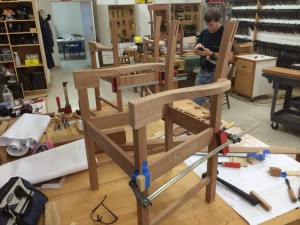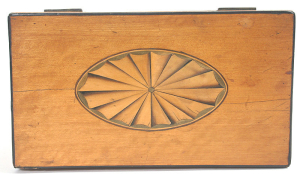Don’t Let Experience Level Stop You
 It’s Get Woodworking Week and in my attempt to encourage and welcome new woodworkers I have only this message:
It’s Get Woodworking Week and in my attempt to encourage and welcome new woodworkers I have only this message:
Drop the beginner label and tackle anything.
Check out any project plan or article/video and you will find some kind of label associated with it telling us if it is a beginner, intermediate, or advanced project. I won’t deny that these labels are placed for a reason and there is not question that an advanced project will be “harder” to complete than a beginner project. What I don’t think however is that the beginner should not attempt an intermediate or advanced project. Failure is always an option with a more advanced project, but is it any more a risk with a beginner project? I think I screw up the easier tasks a lot more than the so called advanced tasks. Its probably over confidence or lack of attention that causes this but it does illustrate my point. If you think about it, is there any difference between the harder tasks and the easier tasks. It seems to me they are all the same.
 If you really focus and break down each task into manageable elements there is very little new under the sun of woodworking that is really that difficult. More often than not you can break these difficult tasks down to such a base level that it becomes obvious that the carving or complex joint, or period inlay you are pondering just becomes a repetitive series of steps.
If you really focus and break down each task into manageable elements there is very little new under the sun of woodworking that is really that difficult. More often than not you can break these difficult tasks down to such a base level that it becomes obvious that the carving or complex joint, or period inlay you are pondering just becomes a repetitive series of steps.
Consider the “intermediate” project of a chest of drawers. Why does this label get associated with it? Is it the number of dovetails in the drawers (should you choose to go that route) or is it the difficulty of building a perfectly square case with a robut interior structure to support the drawers. If you build that chest you will be surprised just how quickly your dovetailing skills improve from the bottom drawer back corner to the top drawer front corner and probably you will be sick of the repetitive nature of saw to the line, chisel to the line, transfer and repeat. Yes you may miss the line a few times but isn’t failing how we learn to be better woodworkers? Why did you miss that line? Was it is a sawing problem or were you too aggressive with your chisel or plane? Diagnosing and addressing these problems becomes a lot easier when you can break down the task into it’s base elements. A dovetail that doesn’t fit or is gappy is a lot more daunting to fix when you consider it as a whole, but not when you break it down.
Creating that interior structure can be done many, many ways but usually it comes down to creating square frames. These are just mortise and tenons or bridles or something similar over and over and over again.
How about something different from joinery like inlaying a paterae? Broken down this is nothing more than precisely hollowing out an area inside the lines of the inlay. How is that different than chiseling along the baselines of a dovetail or tenon shoulder? Perhaps you use a gouge, perhaps not, but the task is still the same and requires the same attention to detail. Making the paterae itself may seem daunting but depending on the design it comes down to fine sawing to a line or accurate chisel work just like what is required to create the recess.

Marc Spagnuolo’s Blacker House Chair in progress shows us it all comes down to funky shaped mortise and tenons.
Chairmaking is often heralded as “the next level” for furniture makers. It is usually the fact that flat and square doesn’t exist in most chairs. But the joints are still the same and the techniques required to cut them identical once you get everything laid out. We are still sawing/chiseling/planing to a line.
All of these skills will pop up on a beginner through advanced projects so I suggest we just drop the labels and with them our fear to take on something because it will be above our skill level. I’m sure someone can find exceptions to this but I think if you really consider the fundamental skills involved in executing a certain task, it will all boil down to similar elements. In fact, this could be a fun exercise and perhaps you will participate in the comments below.
So forget about how long you have been woodworking (if at all) and think about the projects you want to build. Am I oversimplifying how difficult some of these “advanced” projects can be? Of course I am. You will stumble and you will make mistakes, but you can only learn from the mistakes you make and not from the ones you avoid making.
So to get you into the shop and started we have the following words,
“Do or do not, there is no try.” -Yoda
…and to confuse you and remind you that it is okay to not get it right the first time,
“…then try it again, as before, and if you find it try all the way…go over it again, to work out the irregularities” Joseph Moxon
Yes I’m aware that Moxon is using “try” to refer to the act of jointing a surface, but I find this snippet particularly salient to my point to not let any perceived level of difficulty stop you from attempting that next project.
Your Turn
What project intimidates you and why? What elements can you break it down to to simplify it and make it less daunting? I welcome any suggestions where you think this process won’t work as it would be interesting to figure out how it could be simplified. Please share your insights in the comments below.



